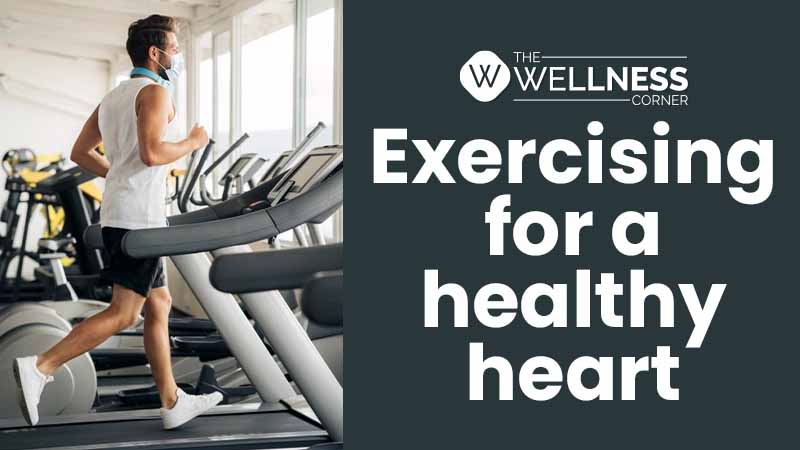Exercising to boost heart health
- 16 months ago
Heart failure is a condition in which the heart struggles to pump blood effectively to keep up with the body’s demand for oxygen. Although it was perceived to be a very serious condition in the past, heart failure is not as terrifying as it sounds. It also does not mean that the heart has failed or stopped working, but only that it is not able to function as efficiently as it should.
Heart failure can be managed
Fortunately, heart failure can be managed and most definitely reversed through medication and certain lifestyle changes such as following a nutrient-rich diet and to some extent through exercise as well.
Exercise is one of the safest ways to reverse the symptoms of heart failure. This is because heart failure weakens more than just the heart. In heart failure, skeletal muscles deteriorate owing to cellular-level damage and this condition can make it very difficult for patients to perform any sort of activity.
Does exercise help regain strength?
But, as hard as it may seem to perform any activity in this condition, exercise is still considered one of the most effective ways to build and regain the strength of the skeletal muscles.
Exercise activates progenitor cells, a group of immature cells present in the skeletal muscles. These muscles divide into mature cells required for muscle repair. People with heart failure generally have only half as many progenitor cells as compared to healthy individuals.
A recent 6-month study conducted on patients with heart failure concluded that exercise indeed helps with the division of progenitor cells, the formation of new cells, and active muscle repair. Another study also found that the activation and production of progenitor cells gave way to the formation of new vessels in the skeletal muscle region.
Additional benefits
Furthermore, exercise was found to:
- Improve peak oxygen consumption and respiratory function
- Improve the autonomic control of circulation
- Enhance vagal activity
- Strengthen the heart and the cardiovascular system
- Increase energy levels
- Improve balance and joint flexibility
- Reduce stress, tension, anxiety, and depression
- Improve sleep
- Reduce body fat
Although exercise offers such amazing results, it is important to only begin working out after getting consent from a physician.
Divide the exercise schedule into 3 parts
Short bursts of intense body weight exercises are considered better than long cardio workouts.
- Warm-up exercises like dynamic stretching, Tai Chi, and Yoga for better balance and joint mobility exercises.
- Cardiovascular exercises like walking, jogging, stationary cycling, and low-impact aerobics for improving heart and lung function and increasing the body’s ability to use oxygen.
- Strength training using weights or resistance for strengthening skeletal muscles.
In addition to all these exercises, special exercises in different postures such as sitting exercises (ankle pump, hip bending, shoulder touching) or stretching exercises (thigh stretching, knee stretching, side bend, etc.) should be performed for a healthy heart.
Do not forget to warm up and calm down
Warm up - Warming up reduces pressure on the heart muscles and slowly increases breathing, blood flow (heart rate) and body temperature.
Calm down - This is the last step of the training session. This allows your body to gradually recover from the ventilation phase. Your heart rate and blood pressure return to near resting levels. Rest does not mean sitting! Do not sit, stand, or lie down immediately after exercising.
How much should you exercise and how often?
Perform 30 minutes to 1 hour of moderate exercise at least 3 days every week.
General tips for people with heart ailments:
- Make sure that each exercise is performed with rest at a constant and balanced pace.
- Avoid hard core exercises like push-ups.
- Do not exercise outdoors in extreme cold, hot, or humid weather. High humidity can make you tired more quickly. High temperatures can disrupt blood flow, make breathing difficult, and cause chest pain.
- Ensure that you stay hydrated. On hot days in particular, it is very important to drink water before you feel thirsty. Be cautious not to drink too much water.
Bottom line
As mentioned before, exercise may not be the only way to reverse heart failure, but it definitely is one of the most cost-effective methods to regain strength and vitality and reduce symptoms of heart failure, provided, the rehabilitation program is practiced on a regular basis and is tailor-made to suit the needs of the individual.
If you face any difficulty while exercising or experience symptoms of a heart condition then you must take the approval of health professionals. Contact a doctor on The Wellness Corner and perform exercises only under supervision of a fitness expert.








